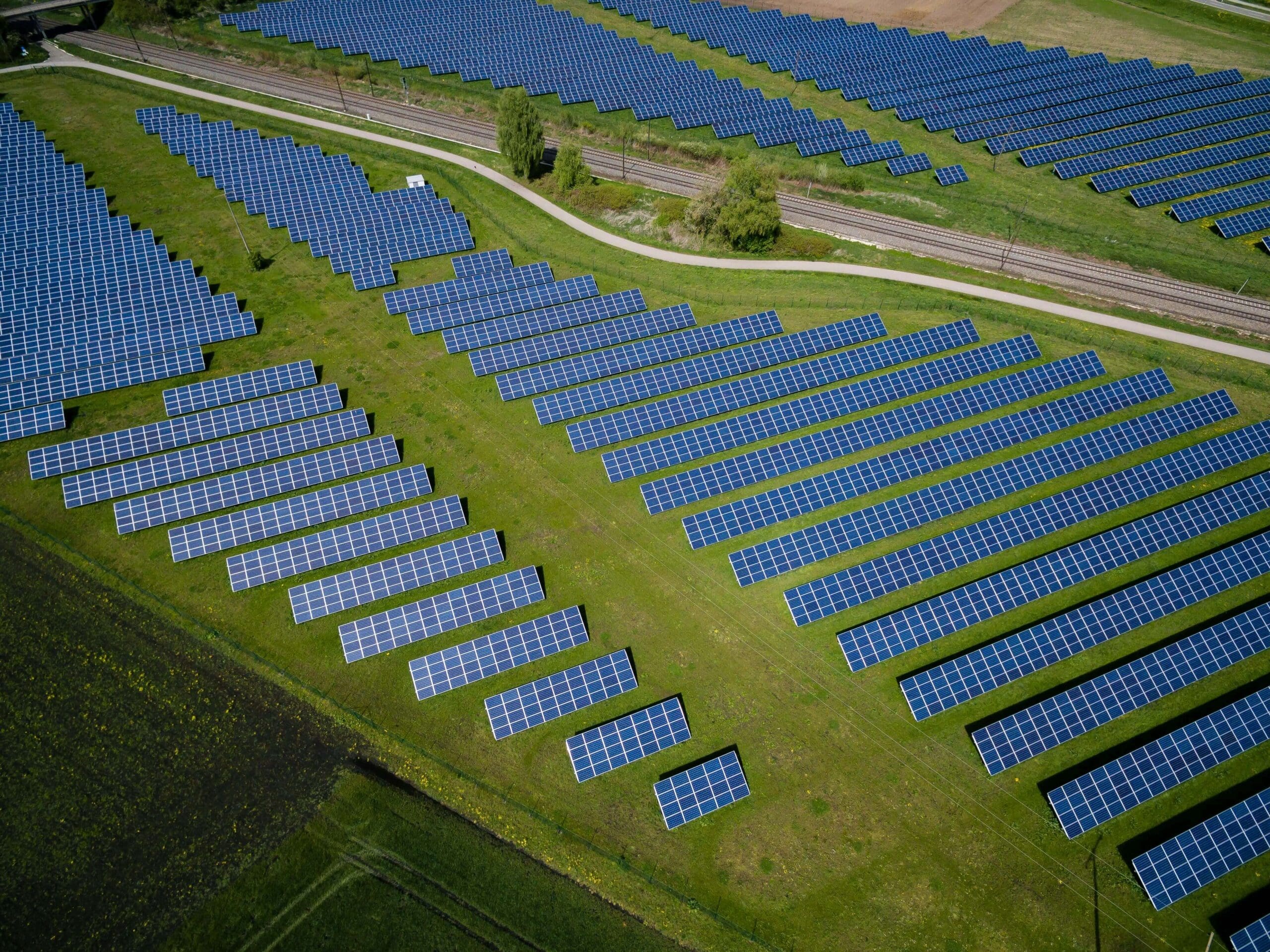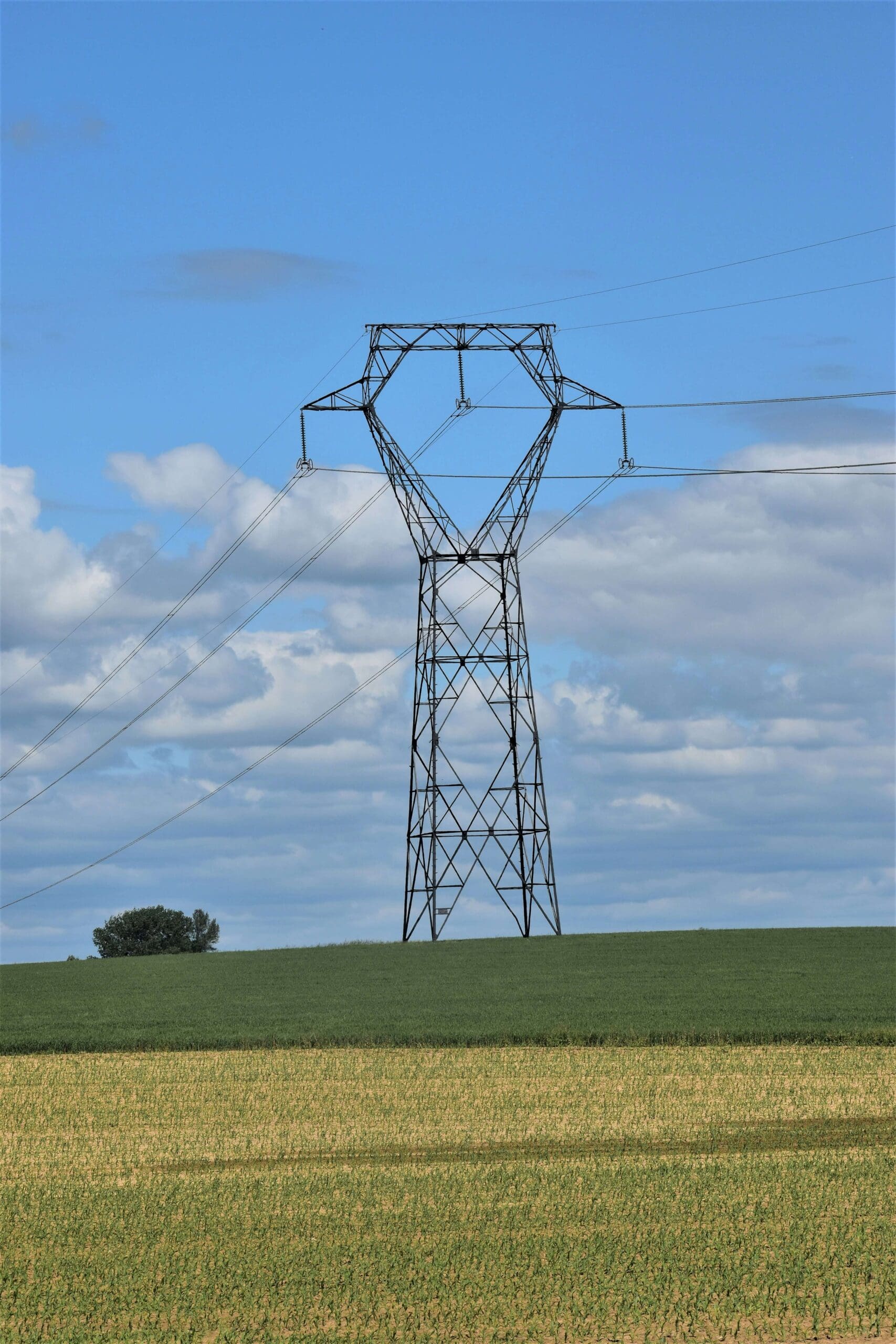The world’s demand for energy is growing at a pace we’ve never seen before. Rising populations, expanding industries, and the electrification of everything, from cars to heating systems, are fueling the need for more reliable power generation. At the same time, the pressure to deliver large-scale infrastructure quickly, efficiently, and cost-effectively has never been greater. Whether driven by economic growth, technological innovation, or strategic investment goals, energy projects today must balance speed, scale, and complexity.
But building a large-scale energy project is a complex undertaking that involves far more than simply installing equipment or breaking ground on a site. These are multi-million-dollar, and in some cases multi-billion-dollar, infrastructure efforts that span years of planning, engineering, and execution. They require the coordination of dozens of stakeholders, from government agencies and financiers to contractors and community leaders. At the center of it all of this is project management. Without rigorous planning, clear governance, and disciplined execution, even the most promising initiative can stall, exceed its budget, or fall short of its performance goals.
Understanding the lifecycle of an energy project is essential to grasp how these massive undertakings come to life. While the specifics may vary depending on the technology or geography, most projects follow a similar arc: Development, where the groundwork is laid through site control, permitting, and commercial structuring; Delivery, where plans are translated into physical infrastructure through construction and commissioning; and Operations, where long-term asset management ensures reliable, efficient, and profitable performance. Each phase presents its own set of risks, challenges, and opportunities, but together, they form the backbone of how energy projects move from concept to commercial reality.
Understanding the Energy Project Lifecycle
Large-scale energy projects, whether fossil-based, renewable, or hybrid, follow a predictable yet complex lifecycle. This structured progression helps manage risk, align stakeholders, and ensure timely delivery. While technologies and geographies vary, most projects unfold across three core phases:
- Development: This is the strategic planning stage, where site selection, permitting, financing, and commercial structuring take place. It’s about laying the groundwork for success.
- Delivery: The project moves from blueprint to reality. Engineering, procurement, and construction (EPC) activities dominate this phase, culminating in commissioning and grid integration.
- Operations: Once online, the asset enters long-term management. This includes performance monitoring, maintenance, and optimization to ensure reliability and profitability.
Each phase of an energy project, from Development to Delivery to Operations, carries its own set of risks, timelines, and critical decision points. From navigating regulatory hurdles and securing financing in the early stages, to managing construction delays and technical integration during delivery, and finally optimizing performance and ensuring reliability in long-term operations, the challenges evolve but never disappear. What keeps these moving parts aligned is disciplined project management: a framework of planning, coordination, and execution that ensures every stakeholder is working toward the same goals, on the same schedule, and within the same constraints.
The Development Phase: Laying the Groundwork (4–6 years)
The development phase is often the longest and most uncertain stage of an energy project’s lifecycle. Typically lasting four to six years, it is the point at which ideas are tested, concepts are challenged, and risks are either mitigated or magnified. Developers sometimes refer to this period as “Feasex” or “Devex,” shorthand for feasibility and development expenditures, which generally account for about 5–10% of the project’s total capital costs. While this may seem small compared to the millions or billions ultimately required for construction, the stakes are enormous. Investments made here determine whether a project moves forward or fails before it ever reaches the shovel-ready stage. For that reason, de-risking during development is critical as every uncertainty resolved early saves time, money, and reputational risk later on.
Feasibility & Early-Stage Planning
The development journey begins with feasibility and early-stage planning. At this stage, developers test the project’s fundamental viability: Is the resource strong enough? Is the market demand sufficient? Are there policies or incentives that support investment? These early assessments set the tone for everything that follows. Rigorous modeling, sensitivity analyses, and independent reviews help identify “fatal flaws” before significant capital is committed. A weak feasibility plan can derail years of effort, whereas strong planning creates confidence among stakeholders, investors, and regulators that the project is both realistic and bankable.
Site Control
Once feasibility is established, securing site control becomes the next major milestone. Without a clear path to land access, no amount of engineering or financial modeling will move the project forward. This process involves negotiating with landowners, aligning with community expectations, and deciding whether to pursue lease agreements or outright land acquisition. Each option carries trade-offs in cost, flexibility, and risk. Long-term leases can be more economical, while acquisitions may provide greater security. Just as important as the legal agreements is the relationship with landowners and local communities as projects that build trust early are far more likely to gain lasting support.
Permitting
With site control in hand, attention shifts to permitting, which is often the most time-consuming and politically sensitive component of development. Projects typically need approvals from multiple layers of government, including county, regional, and sometimes national authorities. Environmental reviews are central to this stage, requiring detailed studies of habitats, species impacts, water usage, and cultural resources. These processes can take years, and opposition from local stakeholders or advocacy groups can delay or derail approvals altogether. Licensing challenges can influence a project’s cost structure, timelines, and even its ultimate design. Effective developers treat permitting as a parallel track to engineering, not a secondary hurdle, ensuring that technical plans align with regulatory realities.
Interconnection
Even the best-located, fully permitted project cannot succeed without a pathway to customers via the grid. Interconnection studies and applications assess whether the local or regional transmission system can accommodate new capacity, and at what cost. These studies often reveal expensive upgrades, long lead times, or competitive bottlenecks that can make or break a project’s economics. Interconnection is also where the principle of balancing responsibility comes into play, meaning developers must balance their obligation to fund certain grid upgrades with the utility’s responsibility to maintain overall system stability. Getting this balance right is critical, as interconnection costs can swing a project from viable to uneconomic in a single study cycle.
EPC Contracting
As the project advances, developers begin to prepare for execution by engaging with Engineering, Procurement, and Construction (EPC) contractors. EPC contracts cover the full scope of physical delivery: engineering design, equipment procurement, and construction activities. Negotiating these contracts is a complex process that involves aligning on performance guarantees, warranties, delivery milestones, and liquidated damages (LDs) for delays. By the time a project reaches Notice to Proceed (NTP), these agreements provide a clear framework that minimizes surprises and ensures accountability all the way through to Commercial Operation Date (COD). In many ways, EPC contracting is the bridge between development and construction.
Securing Revenue Streams
No project can advance to financing without clear revenue streams. Developers must secure Power Purchase Agreements (PPAs) or other offtake contracts that guarantee future cash flows. In some markets, government subsidies, tax credits, or grants provide additional support. Beyond these, developers must also account for curtailment risk (the possibility that grid operators will limit output due to congestion) and negotiate production guarantees that provide lenders with confidence in projected returns. A project without a secure revenue model is simply not bankable.
Construction Funding
Once revenue streams are in place, developers can pursue construction financing. Options range from funding directly off the balance sheet to non-recourse project financing, syndicated loans, or equity partnerships. In many markets, tax equity plays an essential role, particularly in the U.S., where investors monetize tax incentives in exchange for ownership stakes. In Canada, while a formal tax equity market like the one in the U.S. does not exist, government incentives such as the Clean Technology Investment Tax Credit (CTITC) and accelerated depreciation (Capital Cost Allowance) play an essential role in project economics.
Developers typically rely on a mix of these incentives, direct grants, and traditional debt and equity financing to structure projects attractively for investors. Banks and equity partners also often require guarantees to manage their exposure. Each financing structure carries trade-offs in terms of control, risk allocation, and long-term profitability. Structuring this properly is one of the most critical and complex steps in development.
Development Risk & Probability of Success
Despite years of work, the reality is that only a fraction of projects launched in the development phase make it all the way to construction. Technical challenges, permitting delays, interconnection bottlenecks, or financing shortfalls can derail even the most promising initiatives. For developers, maximizing the probability of success requires discipline: rigorous feasibility studies, strong community engagement, careful contract negotiation, and relentless focus on de-risking each step of the process. The development phase may not pour concrete or generate electrons, but it determines whether a project ever gets that far.
The Delivery Phase: Building the Project (+90% of Total Capital)
Once a project has cleared the hurdles of development and reached Notice to Proceed (NTP), it enters the Delivery phase. This is the most capital-intensive stage of the lifecycle, often accounting for more than 90% of total project costs. Success here depends on disciplined project management, careful procurement, and seamless execution. While every project faces its own challenges, the fundamentals are consistent: securing equipment, managing construction, verifying performance, and reaching the all-important Commercial Operation Date (COD).
Procurement
The first major task in delivery is procurement. For utility-scale projects, this typically involves sourcing solar modules, wind turbines, transformers, and the full “balance of plant” required to build a functioning facility. In today’s globalized market, supply chain risks are a constant reality ranging from price volatility and shipping delays to quality assurance concerns. Developers must manage these risks proactively, often by diversifying suppliers, locking in contracts early, and ensuring that specifications match technical and commercial requirements. A single misstep at this stage can trigger costly delays that ripple throughout construction.
Notice to Proceed (NTP)
The official start of project execution is marked by the Notice to Proceed (NTP), a critical milestone that signals construction is ready to begin. Reaching NTP requires meticulous preparation, with all critical elements such as financing, permits, designs, procurement, and risk plans finalized. At this point, developers may also choose to sell down part of their equity stake through a Development Stage Buy-Out (DSBO), bringing in new investors to share risk and capital requirements. Whether or not ownership changes hands, NTP represents the pivotal handoff from planning to physical delivery, where budgets, schedules, and contracts take full effect.
Construction Execution
Construction is where the project comes to life. This stage demands careful coordination of equipment delivery, logistics, and installation sequencing. For solar, achieving the “golden row” (the first row of panels installed, quality-assured and quality-checked (QA/QC), and energized) serves as both a symbolic and practical milestone, confirming that systems and processes are functioning as intended. From there, projects progress through mechanical completion, field testing, and commissioning, each step validating safety and performance.
Commercial Operation Date (COD)
The culmination of mechanical completion, field testing, and commissioning is Commercial Operation Date (COD), the point at which the project is officially online and generating revenue. At COD, construction debt is typically refinanced into long-term debt, and developers may pursue a Developer Buy-Out aka Develop, Build, Sell, Operate (DBSO) to transition ownership to long-term operators. COD marks the successful transformation of a capital-intensive build into a revenue-generating asset.
The Operating Phase: Long-Term Value Creation
Once a project has reached Commercial Operation Date (COD), it enters the Operating phase, which is where value is created, preserved, and enhanced over decades. Unlike the capital-intensive Delivery (aka construction) phase, this stage is about ensuring reliability, optimizing performance, and managing risks over the long term. Successful operation requires a combination of strong asset management, disciplined O&M practices, and strategic decision-making around life extension or repowering. Together, these activities determine whether a project remains a profitable, high-performing asset or becomes an under-utilized liability.
Asset Management
Effective asset management sits at the heart of long-term project success. This includes back-office functions such as financial reporting, compliance monitoring, and investor communications, all of which are critical for maintaining trust with stakeholders. It also encompasses contract administration, where operators must manage agreements with offtakers, service providers, and regulators. Warranty claims, insurance matters, and legal obligations often arise during operations, and a proactive asset management strategy ensures these issues are resolved quickly, minimizing disruption to revenue streams.
Operations & Maintenance (O&M)
Operations and maintenance form the day-to-day backbone of performance. Routine inspections, preventive maintenance, and corrective repairs ensure that equipment remains in good working order. Many projects operate under availability guarantees, which require the asset to remain online and producing power for a set percentage of time, making O&M execution directly tied to revenue. Increasingly, digital tools are reshaping this space. AI-driven analytics, remote monitoring platforms, drones for visual inspections, and sensor-based diagnostics are helping operators detect issues earlier, optimize plant performance, and extend equipment life. A well-structured O&M program can be the difference between meeting or missing long-term financial expectations.
Asset Optimization and Repowering
As assets age, operators face critical choices about how to maximize value. Yield assessments help identify opportunities for incremental improvements, such as upgrading inverters, retrofitting blades, or refining control systems to extract more output. In the solar sector, this may involve replacing older panels with higher-efficiency models; in wind, repowering often means installing larger, more advanced turbines on existing sites. These strategies can significantly boost performance without requiring entirely new developments. At the same time, operators must prepare for end-of-life decisions, weighing the costs and benefits of decommissioning, repowering, or extending asset life. The most forward-looking owners take a strategic view of these options, ensuring projects continue to generate value well beyond their initial design lives.
Lessons Learned in Renewable Project Management
Every energy project is a learning experience, and renewable projects, with their rapid pace of innovation, evolving regulations, and diverse stakeholders, often reveal valuable lessons. While each development has unique circumstances, several common themes consistently emerge across projects of all sizes and technologies. Recognizing these lessons helps future projects run more smoothly, avoid costly missteps, and maximize long-term value.
Common Pitfalls and How to Avoid Them
Many large scale energy projects stumble on avoidable issues such as incomplete feasibility studies, underestimating permitting timelines, or overlooking interconnection complexities. Cost overruns and schedule delays often trace back to gaps in early planning or overly optimistic assumptions. The key to avoiding these pitfalls is disciplined project management involving stress-testing models, engaging independent reviewers, and building contingencies into both budgets and schedules. Experience shows that investing in rigor upfront saves far more than it costs.
Importance of Stakeholder Engagement
Stakeholder engagement is not just a box to check; it is a cornerstone of successful project delivery. Indigenous peoples, local communities, regulators, and landowners all play pivotal roles in shaping outcomes. Projects that prioritize free, prior, and informed consent (FPIC) with Indigenous communities, maintain transparent communication, address community concerns, and demonstrate tangible benefits are far more likely to achieve collaborative, mutually beneficial outcomes. Conversely, projects that underestimate the power of stakeholder relationships often face costly setbacks or even termination.
Risk Management at Each Stage
Risk evolves across the lifecycle, requiring constant attention and adaptation. In development, regulatory and financing risks dominate; in delivery, construction execution and supply chain risks rise to the forefront; in operations, performance and market risks take center stage. Effective risk management is about anticipating these shifts, allocating risk to the parties best able to manage it, and maintaining flexibility to respond when conditions change. No single framework eliminates risk entirely, but disciplined practices reduce exposure and improve resilience.
The Balance Between Speed and Thoroughness
Renewables are under pressure to scale quickly to meet climate and energy goals, yet speed without thoroughness can be a recipe for failure. The most successful projects strike a balance: moving decisively when opportunities arise, but not cutting corners in critical areas like permitting, grid integration, or safety. Developers who resist the temptation to rush at the expense of rigor often find that their projects not only reach completion faster but also operate more reliably and profitably over the long term.
The Future of Energy Project Delivery
The energy landscape is evolving rapidly, and project delivery is no exception. Advances in technology, changing regulatory frameworks, and the urgent push to meet net-zero targets are all shaping how projects are planned, executed, and operated. Staying ahead of these trends is essential for developers, investors, and operators who want to deliver projects efficiently while maximizing long-term value.
Digitalization, AI, and Automation
Digital tools are transforming project management from planning through operations. Digital twins allow developers to create virtual replicas of projects to simulate construction sequences, optimize performance, and predict maintenance needs before a single component is installed. Artificial intelligence and machine learning help anticipate equipment failures, forecast energy production, and optimize scheduling. Automation, from robotic installation in solar farms to drone-based inspections in wind projects, increases efficiency while reducing human error and safety risks. Integrating these technologies into project delivery is becoming a standard for high-performing power generation and energy delivery assets.
Policy and Regulatory Drivers
Regulatory frameworks continue to play a defining role in shaping project pipelines. Incentives, permitting requirements, interconnection rules, and environmental regulations influence project economics and timelines. Developers must stay agile, ensuring compliance while seizing opportunities created by supportive policies, such as renewable energy credits or carbon pricing mechanisms. Navigating these rules effectively can accelerate project delivery and reduce financial and operational risk.
Scaling Up to Meet Growing Energy Demands
Rising global energy demand, driven by rapid digitalization, AI workloads, and the expansion of data centers, is putting unprecedented pressure on energy infrastructure. Delivering projects at scale requires not only faster execution but also enhanced coordination across developers, financiers, EPC contractors, and local communities.
Future project delivery will increasingly rely on replicable processes, cross-project learning, and the strategic integration of emerging technologies to keep pace with energy-intensive industries. Utility-scale energy projects must be deployed quickly, reliably, and cost-effectively to support the expanding load from AI, cloud computing, and other digital infrastructure, while maintaining operational resilience and financial viability.
GreenKey Helps Real Estate Developers, Businesses, Communities, and Governments Navigate Complex Energy Projects
The energy project lifecycle, from Development, through Delivery, to long-term Operations, provides a structured framework for turning ambitious concepts into operational assets. Each phase carries its own risks, requirements, and critical decision points, but together they form the roadmap for successful project execution. Understanding this lifecycle helps developers, investors, and stakeholders anticipate challenges, allocate resources efficiently, and optimize outcomes.
From the first conversations with landowners to the final handoff to operations teams, every stage of the lifecycle demands foresight, coordination, and an eye for risk and opportunity. At GreenKey Consulting, we specialize in guiding clients through this complexity. Our team brings hands-on expertise across development, delivery, and operations, ensuring projects reach commercial operation on schedule and with the structural, financial, and operational strength needed to deliver long-term value. Whether it’s de-risking early-stage permitting, structuring construction financing, or optimizing long-term asset management, we provide the clarity, rigor, and experience needed to transform ambitious project ideas into dependable, high-value energy assets. With GreenKey Consulting as your partner, you can move confidently through the entire project lifecycle, knowing each step is managed for success.




